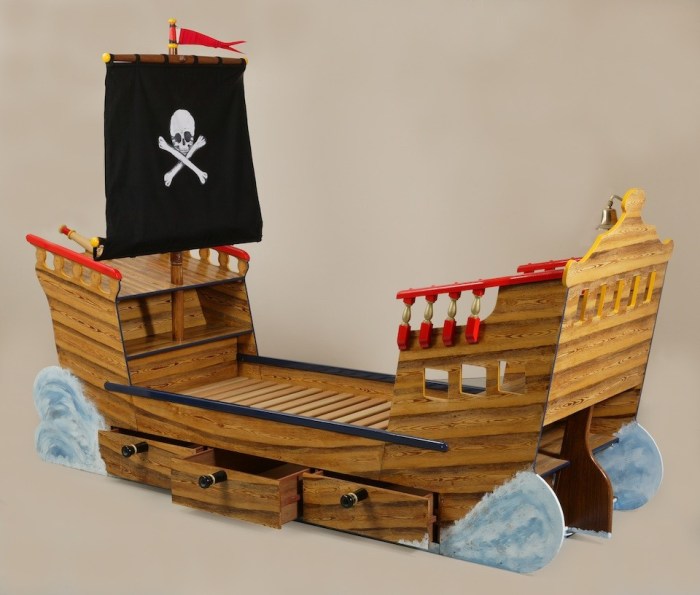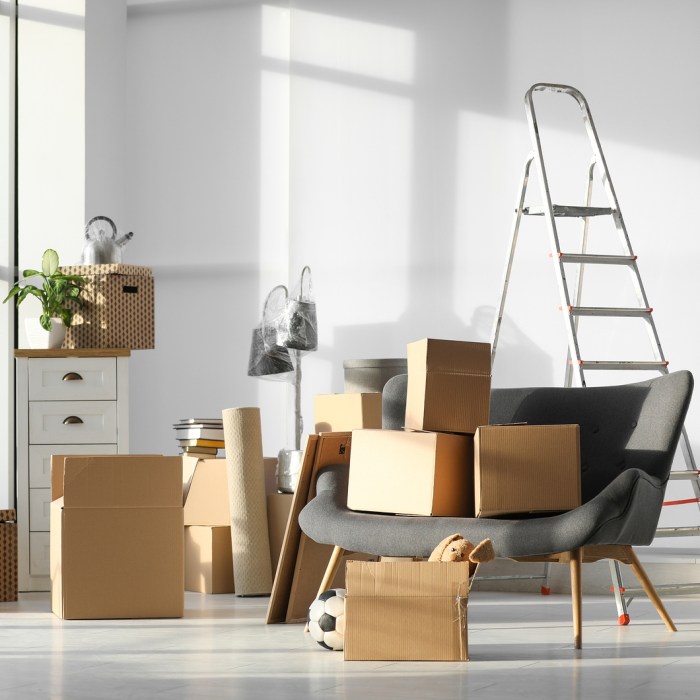Step aboard the captivating world of furniture ships, where meticulous design meets the unique challenges of maritime environments. From ergonomic seating to space-saving solutions, delve into the intricacies of crafting furniture that transforms ship interiors into havens of comfort and efficiency.
As we navigate the intricacies of furniture design for ships, we’ll uncover the secrets of space optimization, safety considerations, and the art of customization. Join us on this voyage of discovery, where every piece of furniture tells a story of innovation and well-being.
Furniture Types and Styles: Furniture Ship
Ships require specialized furniture designed to withstand the unique challenges of a marine environment, ensuring both comfort and functionality.
Furniture styles range from traditional to contemporary, with materials and construction techniques varying depending on the intended use and desired aesthetics.
Types of Furniture
- Seating:Chairs, sofas, and benches are essential for providing comfortable seating in cabins, lounges, and dining areas.
- Tables:Dining tables, coffee tables, and work desks serve multiple purposes, from dining and socializing to working and writing.
- Storage:Cabinets, drawers, and shelves provide ample storage space for personal belongings, supplies, and equipment.
- Lighting:Lamps, chandeliers, and sconces illuminate the interior and create a cozy ambiance.
- Decorative:Mirrors, artwork, and plants add a touch of style and personalization to the living spaces.
Styles and Materials
Popular furniture styles for ships include:
- Nautical:Inspired by the sea, featuring natural materials like wood, leather, and brass.
- Modern:Characterized by clean lines, geometric shapes, and functional design.
- Traditional:Incorporates classic designs with ornate carvings, rich fabrics, and antique finishes.
Materials used in ship furniture construction include:
- Wood:Durable and aesthetically pleasing, available in various species such as teak, mahogany, and oak.
- Metal:Provides strength and corrosion resistance, often used for frames and hardware.
- Leather:Luxurious and durable, commonly used for upholstery and accents.
- Fabrics:Upholstery fabrics range from natural materials like cotton and linen to synthetic materials like polyester and nylon.
Space Planning and Optimization
In ship interiors, space planning poses unique challenges due to the compact nature of the environment. Optimizing space utilization is crucial to maximize comfort and functionality while adhering to safety regulations.
Strategies for space optimization include:
- Multi-functional furniture:Furniture that serves multiple purposes, such as a bed that converts into a sofa, saves space and enhances flexibility.
- Vertical storage:Utilizing vertical space through shelves, cabinets, and drawers maximizes storage capacity without cluttering floor space.
- Space-saving appliances:Compact appliances, such as stackable washer-dryers or under-counter refrigerators, conserve valuable floor space.
- Modular furniture:Modular furniture allows for customization and reconfiguration to adapt to changing needs and maximize space utilization.
Innovative Furniture Designs
Innovative furniture designs have emerged to address the challenges of space planning in ship interiors:
- Murphy beds:Fold-away beds that can be hidden into walls or cabinets when not in use, maximizing floor space during the day.
- Sofa beds:Sofas that can be converted into beds, providing a versatile seating and sleeping solution in limited spaces.
- Nested tables:Tables that can be stacked or nested together to save space when not in use, allowing for flexible configurations.
- Floating shelves:Shelves mounted on walls or ceilings, providing storage without taking up valuable floor space.
Ergonomics and Comfort
Ergonomics plays a crucial role in ship furniture design, ensuring that furniture is designed to fit the human body and support comfort and well-being. By incorporating ergonomic principles, furniture can help reduce fatigue, muscle strain, and the risk of musculoskeletal disorders among crew members.
Ergonomic furniture features include adjustable seating, lumbar support, and footrests. These features allow crew members to customize their seating positions, reducing pressure points and promoting proper posture. Additionally, the use of anti-fatigue mats and ergonomic keyboards can further enhance comfort and reduce strain.
Adjustable Seating
Adjustable seating allows crew members to customize the height, backrest angle, and seat depth to suit their individual body dimensions. This ensures proper alignment of the spine, reduces muscle strain, and promotes circulation.
Lumbar Support
Lumbar support provides additional support to the lower back, reducing pressure on the spinal discs and preventing back pain. Lumbar support can be integrated into chairs or added as an attachment.
Furniture ships are vessels designed specifically to transport furniture and other large items. They are equipped with specialized loading and unloading equipment to handle delicate and bulky pieces. One notable furniture ship is the “Buttercup,” which has been a mainstay in the industry for decades.
Buttercup furniture is known for its exceptional craftsmanship and high-quality materials, making it a popular choice among furniture enthusiasts. The “Buttercup” continues to sail the seas, delivering exquisite furniture to destinations worldwide.
Footrests
Footrests elevate the feet and reduce pressure on the legs and lower back. This helps improve circulation, reduces fatigue, and promotes a more relaxed posture.
Anti-Fatigue Mats
Anti-fatigue mats are designed to provide a cushioned surface that reduces pressure on the feet and legs. This can help reduce fatigue and discomfort associated with prolonged standing or sitting.
Ergonomic Keyboards
Ergonomic keyboards are designed to reduce strain on the wrists and hands. They often feature split keys, curved keybeds, and palm rests, which help maintain a neutral wrist position and reduce muscle strain.
Safety Considerations

Ensuring the safety of furniture on ships is crucial to prevent accidents and maintain a safe environment for passengers and crew. Adhering to safety regulations and incorporating safety features into furniture design are essential aspects of ship furniture safety.
International Maritime Organization (IMO) regulations, such as the International Convention for the Safety of Life at Sea (SOLAS), establish safety standards for ship furniture. These regulations include requirements for fire resistance, stability, and durability.
Fire Safety
Furniture materials play a vital role in fire safety. Non-combustible or fire-retardant materials, such as metal, fiberglass, or treated wood, can minimize the spread of fire. Upholstery fabrics should also meet fire safety standards to prevent rapid flame propagation.
Accident Prevention
Furniture design should prioritize stability and minimize the risk of accidents. Sharp edges or protruding parts should be avoided to prevent injuries. Securely fastening furniture to the floor or walls can prevent it from shifting or toppling over during rough seas.
Non-slip surfaces and ergonomic designs can enhance safety by reducing the risk of slips, trips, and falls. Proper lighting and clear pathways around furniture can prevent accidents in low-visibility conditions.
Materials and Designs for Safety
- Metal furniture:Durable, fire-resistant, and easy to clean.
- Fiberglass furniture:Lightweight, corrosion-resistant, and fire-retardant.
- Treated wood furniture:Fire-resistant and durable, but requires regular maintenance.
- Non-slip surfaces:Rubber or textured materials provide traction and prevent slips.
- Ergonomic designs:Promote comfort and reduce fatigue, minimizing the risk of accidents.
Customization and Aesthetics

Customizing ship furniture is crucial to meet specific requirements and preferences. Different ship types, such as passenger vessels, cargo ships, and naval vessels, have unique functional and aesthetic needs. By tailoring furniture to these specific requirements, comfort, functionality, and space optimization can be achieved.
Tailoring to Ship Types
- Passenger Vessels:Focus on comfort, style, and maximizing space. Furniture should provide ample seating, storage, and relaxation areas, creating a welcoming and comfortable environment for passengers.
- Cargo Ships:Prioritize durability, functionality, and space optimization. Furniture should withstand harsh conditions, facilitate efficient storage and handling of cargo, and optimize space utilization.
- Naval Vessels:Emphasize durability, functionality, and space optimization under extreme conditions. Furniture should be resistant to shock, vibration, and corrosion, ensuring crew safety and mission effectiveness.
Aesthetics and Visual Appeal
Aesthetics play a vital role in creating a visually appealing and comfortable environment. Furniture design should complement the overall interior design of the ship, enhancing its visual appeal and creating a cohesive atmosphere. Color schemes, textures, and materials should be carefully considered to evoke desired emotions and create a welcoming and comfortable space for passengers and crew alike.
Sustainability and Environmental Impact

Environmental considerations are crucial in modern furniture design. Sustainable furniture practices minimize environmental damage and conserve natural resources.Furniture materials and manufacturing processes significantly impact sustainability. Wood from sustainably managed forests, recycled materials, and low-emission finishes reduce environmental footprints.
Eco-Friendly Furniture Options, Furniture ship
Eco-friendly furniture options include:
Bamboo Furniture
Bamboo is a rapidly renewable resource with low environmental impact.
Recycled Plastic Furniture
Furniture made from recycled plastic reduces waste and conserves resources.
Moving your prized furniture ship from one port to another requires expertise and care. Entrusting this task to seasoned local furniture movers ensures a seamless and damage-free journey for your precious cargo. Their adept handling and meticulous attention to detail will guarantee the safe arrival of your furniture ship at its new destination.
Cork Furniture
Cork is a sustainable material harvested from cork oak trees without damaging them.
Navigating the vast sea of furniture options can be daunting. However, reputable brands like harvertys furniture serve as reliable beacons, guiding us towards stylish and functional pieces. Their collections cater to diverse tastes, ensuring that every ship can find its perfect harbor.
Upcycled Furniture
Upcycling old furniture extends its lifespan and reduces waste.These options promote sustainability, reduce environmental harm, and contribute to a greener future.
Trends and Innovations
The furniture industry is constantly evolving, with new trends and innovations emerging all the time. In the ship furniture sector, these trends are driven by a number of factors, including changing passenger demographics, advances in technology, and a growing focus on sustainability.One
of the most significant trends in ship furniture design is the increasing use of technology. Technology can be used to enhance the functionality and comfort of furniture, and it can also create new and innovative design possibilities. For example, some ship furniture now features built-in charging stations, while other pieces can be controlled with voice commands or smartphone apps.Another
major trend is the use of sustainable materials. As passengers become more environmentally conscious, they are increasingly demanding furniture that is made from sustainable materials, such as recycled wood or bamboo. Sustainable materials can help to reduce the environmental impact of ship furniture, and they can also create a more comfortable and healthy environment for passengers.
Innovative Materials
* Lightweight and durable materials like carbon fiber and titanium alloys are being used to create furniture that is both strong and easy to move.
- Antimicrobial fabrics and surfaces are becoming more common, helping to reduce the spread of germs and bacteria.
- Sustainable materials like bamboo and recycled wood are being used to create furniture that is both eco-friendly and stylish.
Innovative Technologies
* Built-in charging stations and USB ports allow passengers to easily charge their electronic devices.
- Voice-activated controls and smartphone apps make it easy to adjust furniture settings and control lighting.
- Motion sensors can be used to automatically adjust furniture to the user’s preferred position.
Innovative Design Concepts
* Modular furniture can be reconfigured to create different layouts, making it ideal for ships with limited space.
- Multifunctional furniture can serve multiple purposes, such as a sofa that converts into a bed.
- Ergonomic furniture is designed to provide maximum comfort and support, reducing fatigue and muscle strain.
Closure
Our journey through the world of furniture ships concludes with a profound appreciation for the ingenuity and craftsmanship that goes into creating these maritime masterpieces. By embracing ergonomic principles, maximizing space, and prioritizing safety, furniture designers have transformed ship interiors into environments that enhance the lives of seafarers, fostering comfort, well-being, and productivity.
Top FAQs
What are the key considerations for furniture design in ship interiors?
Space optimization, ergonomics, safety, customization, and aesthetics are paramount in creating functional and comfortable ship interiors.
How does furniture contribute to safety on ships?
Fire-resistant materials, non-slip surfaces, and secure fittings ensure furniture meets safety regulations and minimizes accident risks.
What role does customization play in ship furniture?
Customization allows furniture to be tailored to specific ship types, interior designs, and the unique needs of crew members.